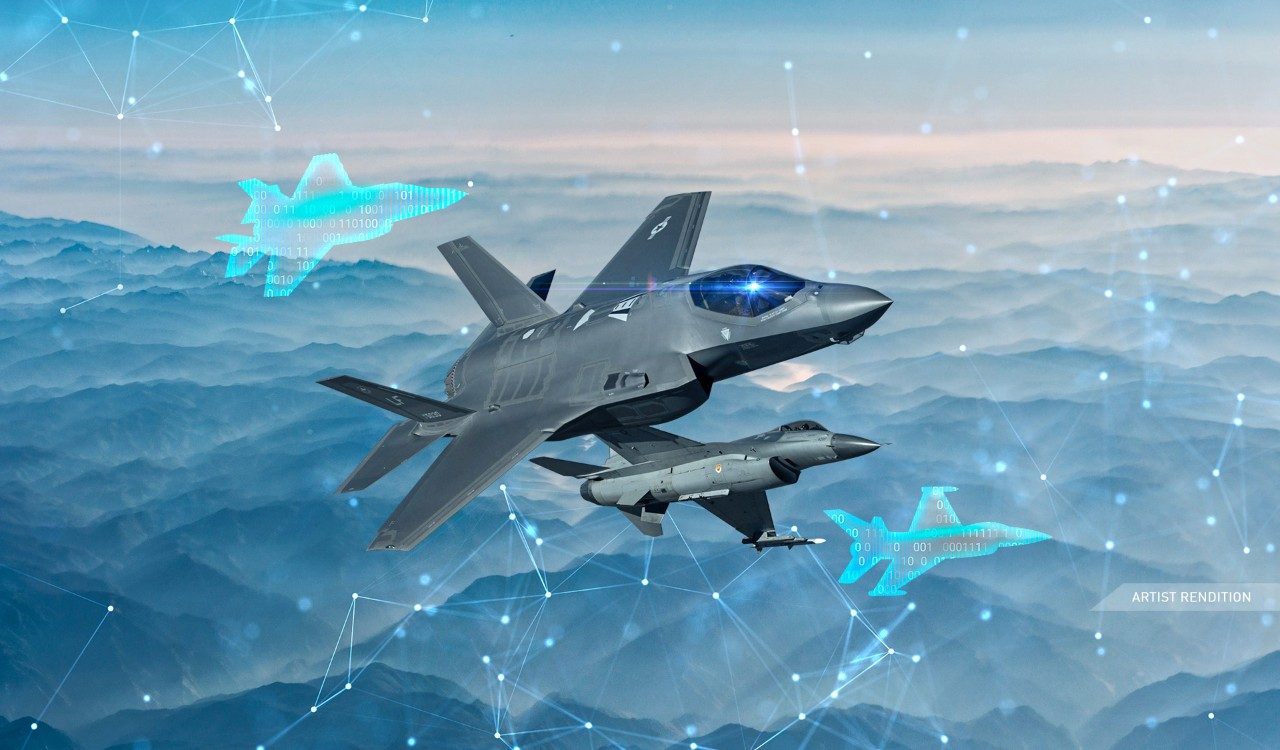Lockheed Martin Leverages AI and Machine Learning to Revolutionize Defense and Space Technology
As the United States and allies face an increasingly complex geopolitical environment, Lockheed Martin’s leadership in evolving and transforming for the future is more important than ever. That’s why the corporation prioritizes and invests in the most advanced technologies including in Artificial intelligence (AI) and machine learning (ML). AI and ML are key tenets of Lockheed Martin’s 21st Century Security vision – not only in utilizing AI/ML, but enabling it at scale to support customers’ critical missions.
One of Lockheed Martin’s latest projects in the AI/ML space is the Defense Advanced Research Projects Agency’s (DARPA) Artificial Intelligence Reinforcements – or “AIR” – program. DARPA recently awarded Lockheed Martin the AIR contract to develop AI tools for dynamic, airborne missions to achieve dominant airborne tactical autonomy. The AIR program aims to provide advanced Modeling and Simulation (M&S) approaches and dominant AI agents for live, multi-ship, beyond visual range (BVR) missions.”

In support of this, Lockheed Martin has offered a solution concentrated on the development of advanced M&S capabilities using AI-driven models to deliver faster and more accurate results enabling rapid training of AI agents. Lockheed Martin’s ARISE™ capability standardizes M&S and utilizes AI to enable the processing of large volumes of data. This provides large cost savings for the Department of Defense and enables us to provide enhanced capabilities to the warfighter.
“When creating AI, you need to generate and test on vast amounts of data in high-fidelity simulations,” said Jason Luck, a senior fellow specializing in AI and autonomy at Lockheed Martin. “Unfortunately, higher fidelity goes hand in hand with higher processing demands and longer run times. The capabilities developed on DARPA AIR will advance ARISE to enable extremely rapid testing of products during development and to rapidly upgrade our products to meet the urgent needs of our customers. We are also looking at other ways the advanced capabilities developed on DARPA AIR can be used within ARISE and across the corporation."
Another way Lockheed Martin is using AI is through aircraft inspection of potential anomalies. This is an important factor in helping to reduce maintenance costs and improve safety. This technology can potentially apply across the corporation to inspect various aircraft types.
Lockheed Martin is working closely with customers to ensure AI models are trusted by the end-user to meet their mission needs. This is especially true with Lockheed Martin’s use of AI/ML in support of the U.S. Navy's Aegis Combat System. AL/ML helps the system assess threats and make decisions based on data. Already, this technology has helped make updates for destroyers to counter Houthi attacks.
Lockheed Martin remains committed to advancing state-of-the-art autonomous systems in support of the U.S. Air Force’s Collaborative Combat Aircraft (CCA) effort. The Skunk Works® team is hard at work, prioritizing speed to ramp and delivering quantity at scale to realize the Air Force vision of autonomous systems working synergistically with crewed and uncrewed systems to provide the ultimate in mission flexibility as part of a distributed team. Our work to develop and integrate pathfinding open architectures, ground control systems like the MDCX™ and mission systems continues. For some time, we’ve been focused on bringing to life the transformative power of autonomous and AI-enabled operations in crewed and uncrewed Department of Defense systems, with particular focus on integrating fifth generation aircraft. This commitment and work are ongoing.
One of the future’s biggest challenges is data. Even now humans alone can’t make sense of -- or make quick decisions from -- all the sensor data they receive. Lockheed Martin is taking on this challenge by demonstrating how AI can analyze multiple, diverse data streams to create a prototype Earth and Space Observing Digital Twin of current global weather conditions for the National Oceanic and Atmospheric Administration (NOAA). Technology like this could provide greater situational awareness for many of the company’s other customers.
Lockheed Martin is also already using AI for spacecraft monitoring and control. As part of a company-funded demo to show how space can enhance Combined Joint All-Domain Command & Control (CJADC2), AI is autonomously monitoring spacecraft telemetry for two Pony Express 2 mission smallsats. An AI application onboard both satellites -- called Telemetry Analytics for Universal Artificial Intelligence (T-TAURI) -- has the ability to predict potential failures faster than humans, allowing controllers to stay ahead of ready for issues before they occur.
These are just a few examples of how Lockheed Martin is leveraging the power of AI and ML to support its customers, and there are sure to be many more exciting developments to come.
“At Lockheed Martin, our AI capabilities are designed to help customers complete their missions with greater speed, accuracy and safety,” said Dr. Steven Walker, chief technology officer at Lockheed Martin. “Across the corporation, we’ve invested heavily in AI – not only in the tools that build AI but in specific capabilities across all domains. We offer an open AI platform that others can build on so that our service members can have the capabilities they need when and where they need it most.”
With its expertise in AI and ML, Lockheed Martin is well-positioned to continue leading the way in defense and space technology for 21st Century Security® solutions. As AI and ML continue to advance, Lockheed Martin will find even more ways to support its customers and contribute to the security and prosperity of the U.S. and its allies.




